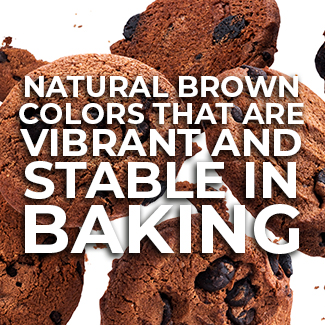Vibrant Red Velvet Concepts Naturally
The Origin of Red Velvet Cake
The vibrant red velvet concept is popular among many consumers and professionals in the food industry all around the world. From Starbucks cakes in the US to protein bites in Germany, it seems to be everywhere. Did you know that the history of red velvet cake goes back to the 18th century? … And it has not lost its popularity since then. Traditionally, red velvet cake is a layered cake topped with French-style butter roux icing, which was later often replaced by cream cheese. The unique red color originally came from the presence of vinegar and buttermilk reacting with the anthocyanins in traditional cocoa powder. However, for most of the last few decades, the bright red color has been achieved by adding food coloring, partially because cocoa powder used now is alkalized to neutralize its acidity.
IN 2020, MORE THAN 25% OF LATIN AMERICAN CONSUMERS THINK A PERFECT CAKE OR SWEET BAKED GOOD NEEDS TO HAVE THE “WOW” FACTOR.
Consumers show a significant interest in new concepts and sweets that are inspired by flavors from abroad. Red velvet cake has a great opportunity to satisfy consumers’ curiosity and desire for new and exciting items, not only in the bakery segment, also in confectionery, plant – based and snacks.
The Red Challenge
From a technical point of view, red velvet is not overly challenging when it comes to baking applications traditionally with synthetic colors, however, heat, pH, and oil instability are things to be considered when developers wish to formulate with colors from natural sources.
Although anthocyanins were the original source of color in red velvet, unfortunately, they are not a very good solution today. On average, baked goods are between pH 5 and pH 7 and in some cases, pH levels can shift even higher which can cause standard anthocyanins to shift from red to purple.
Standard beet is another option, but not without its own set of challenges. Beet is a pretty good shade of red at a pH level between 5-7. However, because of the Maillard reaction, beet has a tendency to brown and can sometimes have a bluer tinge than is desired for red velvet baked goods. One great option is to use a stabilized form of beet such as Sensient’s high stability formulations.

Magna RubyTM Fills the void for a bright, vivid red color shades from a plant sourced natural color in pH neutral applications like baked goods and dry grocery products.
It’s a natural color technology with a higher concentrated formulation for dosage efficiency to bring those red velvet alive in various categories like extruded products, bakery and confection to have outstanding heat-stable red shades.
If you’re interested in testing Magna RubyTM for your next red velvet shade project, samples are ready to ship TODAY! Request one here.











